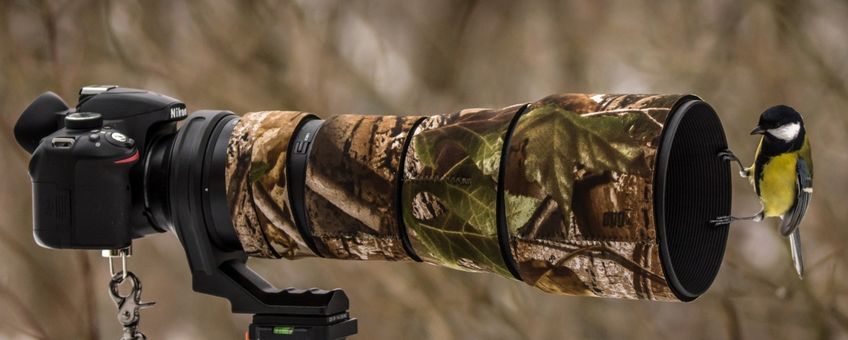
Citizen Science as a concept for success in wildlife biology
Leibniz Institute for Zoo and Wildlife ResearchCitizens as stakeholders
Citizen Science experiences a significant boom in the field of wildlife biology and is a promising approach to go new ways in the cooperation between society and science. The scientists demonstrate that two factors lead to the success of Citizen Science projects: “Citizen Science is only successful when the quality and reliability of data can be ensured and the motivation of the citizens kept high to go out regularly to nature to collect data”, explains first author Didone Frigerio from the University of Vienna. The latter is normally ensured when citizens are also stakeholders and thus have a personal - e.g. financial - interest in the research results. Motivation is best kept high when citizens can see their data and the one of others on a digital platform. The visible progress of the research project is a nice experience and results in knowledge gain.
A high quality of data is achieved by a sound introduction into the working tasks and by regular control of the data by the scientists. For simple working tasks it is even possible to achieve equivalent results when using data collected by children or by scientists.
Case studies
The international team of scientists from Austria, Czech Republic and Germany presents four case studies from Europe and Africa showing how the involvement of citizens into research projects can be successful.
Citizen Science projects can generate information that reveals how wildlife in cities moves spatially and how the animals adapt to urban environment. The project 'Foxes in the city' records the behaviour and the spatial use of foxes in relation to the structure of the city and human activities in Berlin. “In our case study, the collaboration with the media was a central part of the project. The continuous reporting and updating of the project in the television and radio significantly contributed to the recruitment of voluntary lay scientists and to the communication of the research goals to the public”, explains Sophia Kimmig from the Leibniz Institute for Zoo and Wildlife Research (Leibniz-IZW) in Berlin.
 “In Namibia, cheetahs are a threat for cattle farmers and the involvement of the farmers into our long-term research project resulted into new mitigation solutions to reduce human-animal-conflicts. Our objective and evidence-based communication with the farmers, the integration of their knowledge and data into our research and the long-term nature of the project resulted into mutual trust. This trust is one of the most important aspects in our collaboration and ultimately also the key for the conservation of cheetahs” say Bettina Wachter and Joerg Melzheimer from the Leibniz-IZW.
“In Namibia, cheetahs are a threat for cattle farmers and the involvement of the farmers into our long-term research project resulted into new mitigation solutions to reduce human-animal-conflicts. Our objective and evidence-based communication with the farmers, the integration of their knowledge and data into our research and the long-term nature of the project resulted into mutual trust. This trust is one of the most important aspects in our collaboration and ultimately also the key for the conservation of cheetahs” say Bettina Wachter and Joerg Melzheimer from the Leibniz-IZW.
Citizen Science takes place also between research and educational institutions. Cooperation projects between the University of Natural Resources and Life Sciences (BOKU) in Vienna and the University of Vienna integrate pupils and students of different age classes in the monitoring of small mammals, birds and insects and in conducting interviews with the general public. “The biggest advantage of these projects lies in the collaboration between natural sciences, educational sciences and local communities which arises from the large network and the collaboration with the schools”, says Silvia Winter, scientist at the BOKU.
 Citizens of the Czech Republic participated in a project that records the songs of yellowhammers with the help of smartphones and digital cameras. For the scientists it was only possible to identify dialects of the birds and to classify them geographically thanks to the nationwide recordings of the songs. “The success of our project motivated scientists in other countries such as Switzerland and Poland to also involve citizens in recording the songs of yellowhammers”, say Pavel Pipek and Lucie Diblíková from the Charles University in Prague and the Czech Academy of Science.
Citizens of the Czech Republic participated in a project that records the songs of yellowhammers with the help of smartphones and digital cameras. For the scientists it was only possible to identify dialects of the birds and to classify them geographically thanks to the nationwide recordings of the songs. “The success of our project motivated scientists in other countries such as Switzerland and Poland to also involve citizens in recording the songs of yellowhammers”, say Pavel Pipek and Lucie Diblíková from the Charles University in Prague and the Czech Academy of Science.
This discussion together with four case studies of Citizen Science in the field of wildlife biology are published in the scientific journal ´Ethology´.
Text: Leibniz Institute for Zoo and Wildlife Research
Photos: Pixabay; Bettina Wachter, Leibniz-IZW; RSPB
